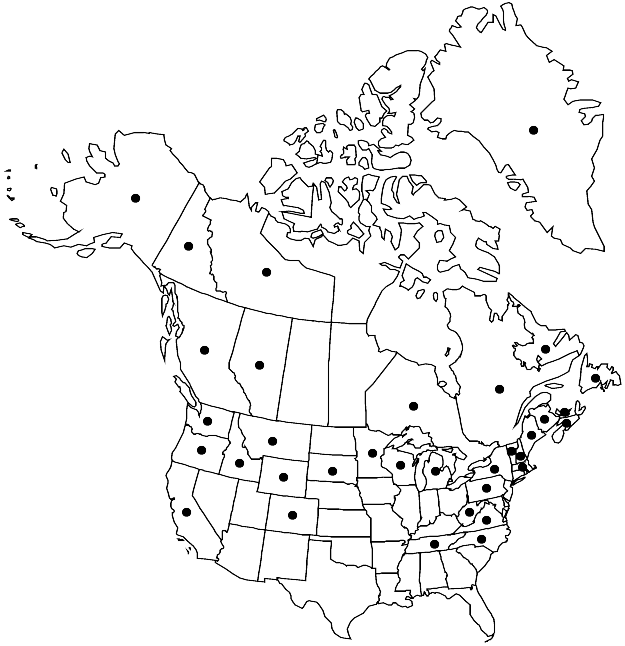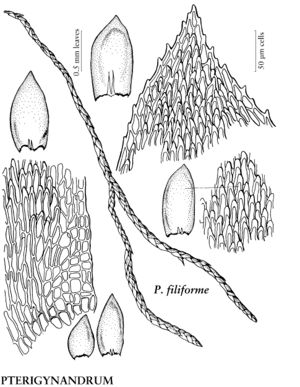Pterigynandrum filiforme
Sp. Musc. Frond., 81. 1801.
Stems with epidermal-cells smooth. Stem-leaves 0.6–1 mm; alar cells small, subquadrate; distal laminal cells curved. Seta 0.5–1.5 cm. Capsule 1–2.5 mm, smooth; peristome diplolepidous; exostome teeth 16, lanceolate, short; endostome segments 16, linear, stout. Spores 11–13 µm.
Habitat: Mesic, rock shelves in montane forests, acidic rock
Elevation: low to high elevations
Distribution

Greenland, Alta., B.C., N.B., Nfld. and Labr., N.W.T., N.S., Ont., P.E.I., Que., Yukon, Alaska, Calif., Colo., Idaho, Maine, Mass., Mich., Minn., Mont., N.H., N.Y., N.C., Oreg., Pa., S.Dak., Tenn., Vt., Va., Wash., W.Va., Wis., Wyo., West Indies, Central America, Europe, Asia
Discussion
Pterigynandrum filiforme is characterized by its slender, sleek, braided stems trailing down the sides of acidic rock. The somewhat curved, ovate, rather blunt leaves, and rhombic, coarsely prorulose laminal cells are additional identifying features.
Selected References
None.
